Between October 24 and 26, I traveled to Mexico City and the City of León, in central Mexico, as part of a delegation with the City of Tucson, Chicanos Por La Causa, Visit Tucson, the Mexican Consulate in Tucson, and Start Up Tucson. As I mentioned in an earlier post, the highlight of our mission was a meeting with the former President of Mexico, Vicente Fox, who hosted us in his Foundation, Centro Fox.
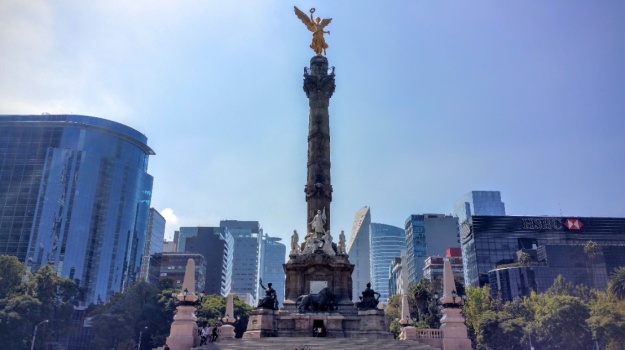
Additionally, we had other high-level meetings with government officials that I would like to underscore.
The first day of our mission, we met with the Undersecretary for Higher Education of the Ministry of Education (SEP), Dr. Salvador Jara, and with the national CEO for public polytechnic universities, Héctor Arreola (also under SEP). The two men have supported Pima’s partnerships with Mexican educational institutions and have funded several groups of students who have come to PCC to study short term programs. The Ministry of Education has developed a new technical higher education model that emphasizes bilingualism, internationalization and sustainability, making PCC a partner in the United States. Mexico is now one of the world’s top countries for graduates in engineering, manufacturing and construction (more than Canada, Germany, or France), while total university enrollment has tripled in 30 years to almost three million students. Dr. Jara and Mr. Arreola were awarded the United States-Mexico Friendship Commendation, a recognition from the City of Tucson and Pima Community College, for advancing our binational links. We discussed the possibility of developing study abroad programs for PCC students who are interested in learning or improving their Spanish, Faculty-led programs, and dual degrees. See Undersecretary Jara’s Tweet
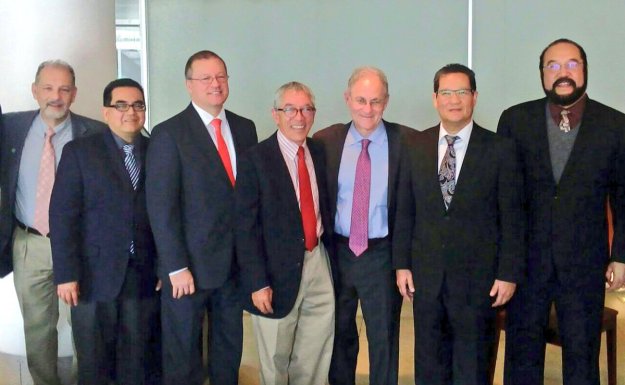
From left to right: Emilio Gaynor, Director of International Development, Chicanos Por La Causa (CPLC); David Adame President & CEO of CPLC; Ricardo Castro-Salazar; PCC’s VP for International Development; Salvador Jara, Undersecretary for Higher Education of Mexico; Jonathan Rothschild, Mayor of Tucson; Lee Lambert, PCC Chancellor; and Héctor Arreola, National CEO for Public Polytechnic Universities of Mexico.
Mayor Rothschild, Consul Pineda, and I also had a private meeting with Paulo Carreño, the Undersecretary for North America of the Ministry of Foreign Relations, who emphasized the strategic relationship that Mexico and the United States have in the global arena. The Ministry, through its Institute for Mexicans Abroad (IME), has awarded PCC scholarship grants for $116,000.00, which have helped many of our students with financial need. Furthermore, with the support of Consul Pineda, PCC has obtained scholarship funds from the private organization Juntos Podemos in the amount of $64,000.00. Ricardo Castro-Salazar, PCC’s Vice President for International Development, has been External Advisor to the Mexican Government through IME and has worked closely with the Mexican Consul to win these grants. This has given Pima a prominent position among US community colleges and a unique relationship with Mexican institutions. We expect to win additional grants in the coming months.
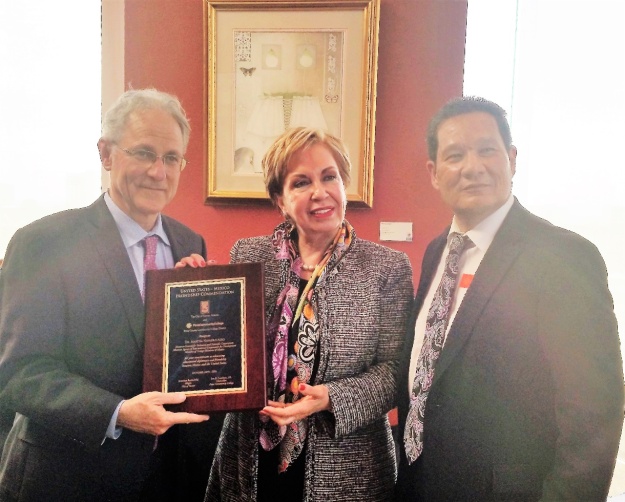
The same morning, we had the opportunity to have a conversation with Dr. Martha Navarro, CEO of the Mexican Agency for International Cooperation and Development. She is also the head of Proyecta 100,000, the Mexican counterpart of the 100,000 Strong in the Americas Initiative by Presidents Obama and Peña. Proyecta has funded thousands of scholarships for Mexican students to attend US educational institutions, including several groups of students who have attended Pima College. Dr. Navarro reiterated the Mexican government’s approach to US-Mexico collaboration, as complementary partners in the global arena, where Mexico could become the sixth largest economy in the world by the year 2050. She also received a formal recognition from Mayor Rothschild and myself for advancing educational diplomacy and binational friendship.
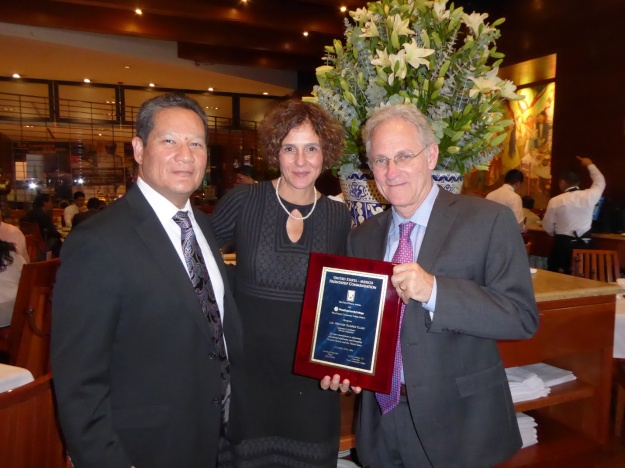
Our fourth and final recognition was given to a great friend of Pima College, Ms. Maggie Suárez, who has been instrumental for our participation in the prestigious SEP-Bécalos-Santander international program. PCC is one of only five community colleges in the US participating in the program, through which we have hosted 177 international students since fall 2014. The program is possible through a partnership between the Mexican Ministry of Education, Televisa Foundation, and Santander Bank. Televisa is the largest telecommunications conglomerate in the Spanish-speaking world and Ms. Suárez is the head of educational programs for its foundation. Ms. Suárez let me know that Televisa Foundation was working on the creation of new international educational programs and she wants PCC to be part of them. This fall, PCC was selected to host 70 scholarship holders from 13 different universities in Mexico. Although one student could not make it, this is the largest cohort we have hosted, confirming our strengthening partnership.
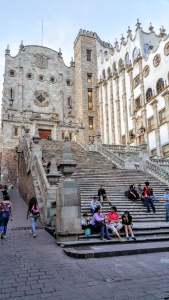
University of Guanajuato, Mexico
In the evening, we took a plane to the City of León, a rapidly developing city with an extensive automotive cluster in the State of Guanajuato, where President Fox’s Foundation is located. On Tuesday, we would visit Centro Fox, learn about the region’s opportunities, and meet with President Fox. Dr. Ian Roark, PCC’s Vice President for Workforce Development, is working in collaboration with Martha Beltran, CEO of the Academic and Research Center at Centro Fox, exploring potential partnerships with PCC.
On Wednesday 26th, we met with Ricardo Mújica, the CEO of the Slim Foundation. Carlos Slim, considered the richest man in the world, has funded numerous cultural and educational projects throughout Mexico. His Foundation’s philosophy is based on Mr. Slim’s premise that philanthropic organizations do not solve poverty and other world challenges, but knowledge does. Thus, it focuses on educational and healthcare initiatives. Fundación Slim is a 30-year old institution with an endowment of $5.5 billion. We learned about the Foundation’s free online educational platform: Aprende.org, aimed at expanding opportunities to anyone with a smartphone and an internet connection.
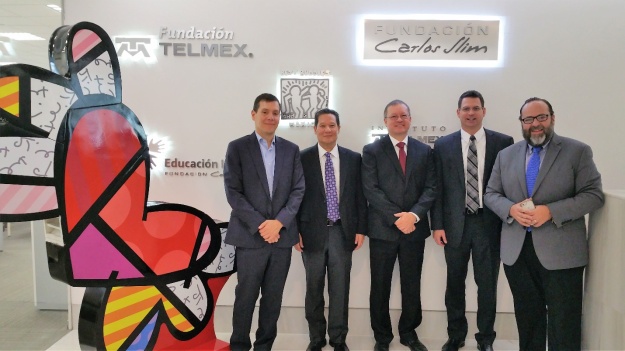
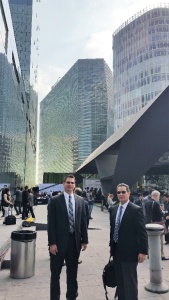
Left, Chancellor Lambert and VP Roark at Plaza Carso, in Mexico City, where Slim Foundation is located.
Our last meeting was with Ms. Rebecca Thompson, Cultural Affairs Officer at the US Embassy in Mexico, as well as Nathalie Scharf and Martha Sánchez from the US Commercial Service. In the past two years, PCC has developed a strong relationship with the Department of State and the US Embassy in Mexico. The Embassy has supported PCC’s programs with Mexico by subsidizing visas for scholarship holders and providing resources toward the 100,000 Strong in the Americas Initiative. Ms. Thompson was enthusiastic about our meeting and has connected PCC with new institutions who want to work with US colleges.
At the end of this intense work agenda, I was pleased to learn that our relationship with Mexico is now acknowledged by numerous institutions and organizations in this vast nation, which is Arizona’s number one commercial partner and one of Tucson’s main sources of tourism and foreign spending. PCC is now recognized in many regions across this country and I was proud to hear this not just from one, but from three different sources at our meetings with the Mexican Ministry of Education, the Slim Foundation, and US Embassy in Mexico. Thanks to this recognition, we have received grants from the US Department of State, the Mexican Ministry of Foreign Relations, and a private international donor. As expressed by Ms. Thompson, from the US Embassy, “Pima is one of our star colleges in Mexico.”

Representatives from the US Embassy and the US Commercial Service in Mexico.










